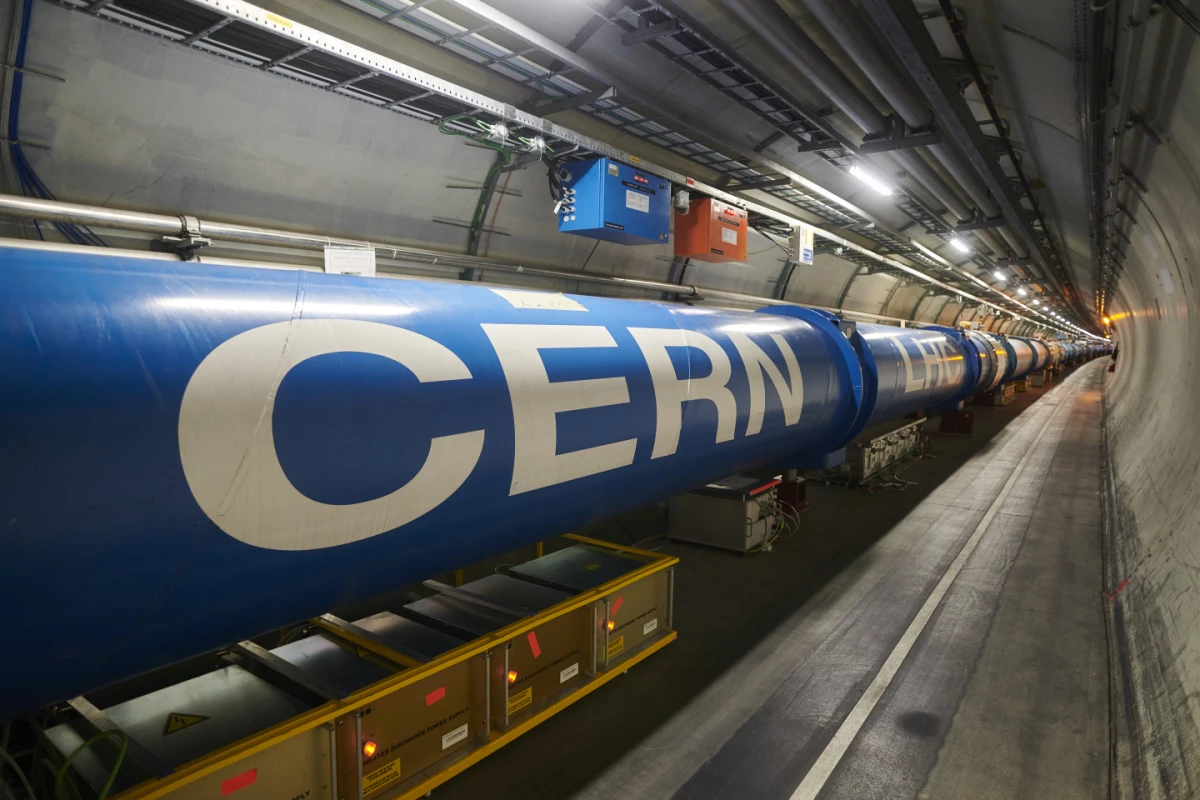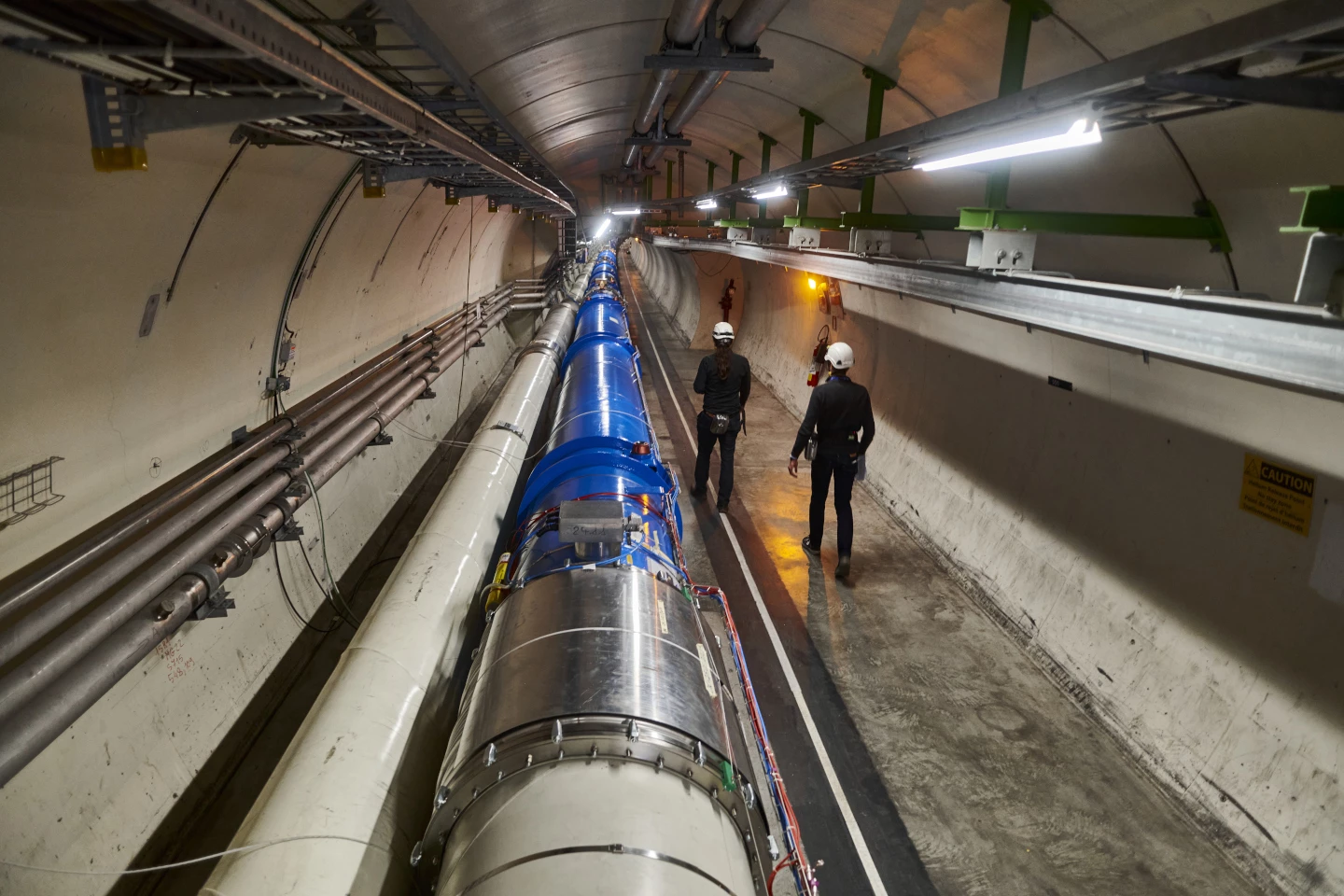The Large Hadron Collider (LHC), the largest and most powerful particle accelerator ever built, is ready to go back into service after a three-year overhaul and refit. On April 22, 2022 at 12:16 pm CEST, two proton beams with an injection energy of 450 GeV were sent in opposite directions around the the 27-kilometer-long (17-mile) ring.
The advantage of a giant atom smasher like the LHC is that the tremendous energies it can impart on subatomic particles can cause them to strike each other so hard that they break apart in such a way as to reveal secrets about the basic nature of physics. The disadvantage is that a machine large enough to encompass a small village requires a lot of work to maintain and upgrade.
The LHC has been out of commission since December 10, 2018 as scientists and engineers carried out a variety of tasks to ensure that it keeps working properly, acquires new capabilities, and increases its ability to detect a number of events in a given time by a factor of 10.
The latest upgrades include improving the insulation on the diodes in over 1,200 magnets used to control the particle beam. These are vital to the operation of the giant ring because they allow the operators to remove the 13,000 amps of current safely. If these diodes should short circuit, the resulting release of energy could cause extensive damage.

Other improvements involved replacing 22 superconducting magnets, as well as cryogenic units, and adding additional instruments. The beam dump used to absorb the particle beams at the end of each cycle has been consolidated into an assembly of graphite and nitrogen gas sealed in seven tonnes of iron shielding. The dump has also been physically disconnected from the accelerator by 10 m (33 ft) to prevent vibrations from the dump being transmitted to the ring.
In addition, 16 new collimators have been installed to clean up stray particles from the beam before it reaches the target.

With the first proton beams fired, the CERN team will now work on fully recommissioning the LHC over the next few months. When it is fully operational, it will produce particle collisions at a record energy of 13.6 TeV. The unprecedented large number of collisions at such high energies are expected to provide new insights into the Higgs boson, the Standard Model of particle physics, and the nature of the universe shortly after the Big Bang.
"These beams circulated at injection energy and contained a relatively small number of protons," the Head of CERN’s Beams department, Rhodri Jones, said of this week's restart. "High-intensity, high-energy collisions are a couple of months away. But first beams represent the successful restart of the accelerator after all the hard work of the long shutdown."
The video below discusses the LHC restart.
Source: CERN









